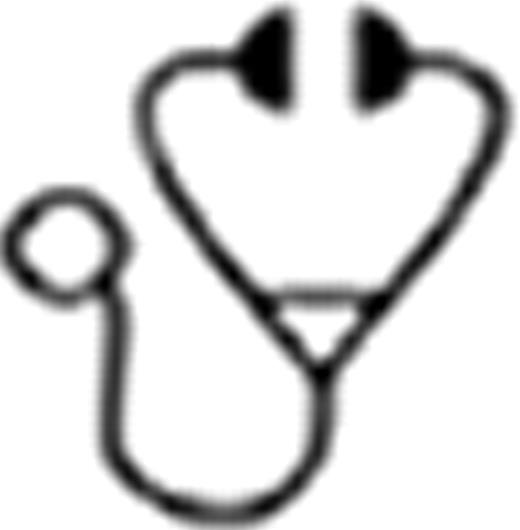Abstract
Abstract  281
281
PEG-IFN-α-2A induces complete hematologic response (CHR) in 76% and 80% of pts with advanced polycythemia vera (PV) or essential thrombocythemia (ET), respectively, which is accompanied by a reduction of at least 50% in the JAK2V617F mutant allele burden in 52% of pts with PV (undetectable in 18%) and in 29% of those with ET (undetectable in 18%). These data suggest selective targeting of JAK2V617F–positive clones. The impact of PEG-IFN-α-2A on other mutations frequently found in patients with PV or ET is unknown.
To investigate the dynamics of mutant JAK2, TET2, MPL, ASXL1 DNMT3a, EZH2, and IDH1/2 alleles in 71 pts with high-risk PV or ET treated with PEG-IFN-α-2A in a phase II study.
Patients and Methods: We performed high-throughput mutational analysis of the regions of known mutations in JAK2, MPL, IDH1, IDH2, and all coding regions of TET2, ASXL1, EZH2, and DNMT3a in pretreatment samples from 71 patients from this trial and in 21 of them obtained serially during treatment or post-treatment. We then analyzed the mutational data to determine (a) distribution of mutations amongst response groups and (b) whether genetic aberrations in addition to the JAK2 mutational burden pre- or post-treatment correlated with response to therapy.
71 pts were analyzed: 12 good responders (at least partial molecular response [≥50% reduction in JAK2V617F allele burden]), 50 intermediate responders (only complete hematologic response), and 9 worst responders (no response or only a partial hematologic response). Median age was 50 years (range, 18–79), time from diagnosis to PEG-IFN-α-2a 51 months (range, 0–355), and number of prior therapies was 1 (range, 0–6). The median JAK2V617F allele burden at study entry was 20% (range, 4.8%-93.6%). The median follow-up was 40 months (range, 8–62). Mutations were found in the following genes in patients from this cohort as follows (using mutations found at any point in treatment): 39.4% JAK2, 14.1% TET2, 14.1% DNMT3a, 5.6% ASXL1, 1.4% EZH2, 1.4% IDH2. No significant differences were observed regarding the number of mutations in genes other than JAK2 between the worst responders and the best responders. The mutational frequency according to response to PEG-IFN-α-2A is shown in Table 1.The proportion of patients carrying 2 or more mutations was 8.3% among the good responders, 0% among the intermediate, and 11.1% among the worst responders. Samples during PEG-IFN-α-2a therapy were obtained in 21 pts (13 good, 4 intermediate, and 4 worst responders). Of note, 50% of the best responders and 22.2% of the worst responders had a mutation in addition to JAK2 prior to starting PEG-IFN-α-2a therapy. Interestingly, high-throughput sequencing done in sequential samples from 11/12 best responders and in 8/9 worst responders revealed that 16.7% of the former and 44.4% of the latter had acquired a new mutation in a gene other than JAK2 during therapy (p=0.04). High-throughput sequencing of individual clones retrieved from clonogenic cultures of bone marrow samples obtained during PEG-IFN-α-2a therapy will be presented.
Mutational frequency by response group
| . | JAK2 . | TET2 . | ASXL1 . | DNMT3a . | EZH2 . | IDH1/2 . |
|---|---|---|---|---|---|---|
| Best (n=12) | 83.3% | 25% | 16.7% | 25% | 8.3% | 0% |
| Intermediate (n=50) | 24% | 6% | 2% | 6% | 0% | 0% |
| Worst (n=9) | 77.8% | 44.4% | 22.2% | 44.4% | 0% | 11.1% |
| P value | 0.385 | 0.221 | 0.581 | 0.186 | 0.275 | 0.129 |
| . | JAK2 . | TET2 . | ASXL1 . | DNMT3a . | EZH2 . | IDH1/2 . |
|---|---|---|---|---|---|---|
| Best (n=12) | 83.3% | 25% | 16.7% | 25% | 8.3% | 0% |
| Intermediate (n=50) | 24% | 6% | 2% | 6% | 0% | 0% |
| Worst (n=9) | 77.8% | 44.4% | 22.2% | 44.4% | 0% | 11.1% |
| P value | 0.385 | 0.221 | 0.581 | 0.186 | 0.275 | 0.129 |
High throughput sequencing analysis of a large number of patients with PV or ET receiving PEG-IFN-α-2a revealed important molecular heterogeneity. The fact that more patients in the worst responder group acquired mutations during therapy compared with the best responder group, may reflect either a possible effect of additional mutations on resistance to therapy, or it may be a consequence of genetic evolution of the malignant clone resistant to PEG-IFN-α-2a-induced eradication in the worst responders.
No relevant conflicts of interest to declare.
Author notes
Asterisk with author names denotes non-ASH members.

This icon denotes a clinically relevant abstract

This feature is available to Subscribers Only
Sign In or Create an Account Close Modal